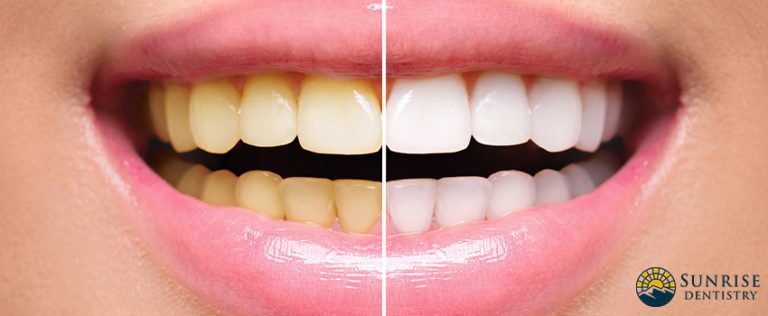According to the CDC, cavities are one of the top problems in children’s dental health. 52% of children six to eight years old have cavities in their baby teeth, while 57% of adolescents between 12 and 19 have cavities in their permanent teeth.
Flossing and brushing are the best ways to prevent cavities. However, reaching every corner and crevice of your teeth is difficult, especially for the back teeth you chew with. Also known as molars, these teeth have deeper grooves than other teeth and are great hiding places for cavity-causing bacteria.
There’s another way to keep teeth safe from cavities. Sealants are thin protective coatings made of plastic or other dental material that stick to your molars’ chewing surfaces. Learn more about dental sealants below.
What Are Dental Sealants?
Our back teeth have fissures or tiny grooves on their surfaces. Food and bacteria often get stuck in these grooves and are difficult to clean. This is the perfect place for bacteria to grow and thrive, producing acids that cause cavities.
Sealants work much like a raincoat for your teeth. They coat your teeth’s chewing surface, keeping food particles and bacteria from sticking. They also make your teeth smoother and easier to clean, preventing tooth decay.
Who Can Use Dental Sealants?
Children and teens are excellent candidates for sealants because they have a high risk of developing decay in the grooves and depressions of their molars or premolars. Sealants can also benefit adults without decay or fillings in their molars.
Dentists should apply sealants on permanent molars or premolars in children as soon as these teeth come out at around 6 or 7 years of age.
Sometimes, sealants are also suitable for baby teeth, usually when they have deep grooves and depressions. Keeping baby teeth healthy is important because they help maintain the proper spacing for permanent teeth.
What Materials Are Used For Dental Sealants?
Sealants are divided into two types based on the reaction they cause when they are applied to teeth:
Glass Ionomer
Dentists only use glass ionomer sealants on baby teeth, and applying them on a patient’s teeth causes them to undergo an acid-base reaction. They also release fluoride, strengthening tooth enamel over the years.
Composite Resin
Dentists use curing lights to apply sealants made of composite resin. This dental sealant material is a mixture of ceramic and plastic and blends well with your natural teeth’s color.
Are Dental Sealants Safe?
Dental sealant problems are nearly non-existent. Sealants have no known side effects except for an allergy. However, some are concerned about the presence of BPA. BPA is a chemical found in plastics associated with some health problems in infants and children.
Sealants do have small amounts of BPA, but it’s not enough to harm you or your loved ones. In fact, touching receipts, applying cosmetics, or being in direct contact with dust exposes you to more BPA than sealants.
How Much Do Dental Sealants Cost?
Some dental insurance plans may cover a portion or all of the costs of sealants since they are preventive treatments. Glass ionomer sealants and composite resin sealants without insurance both cost between $30-$75 per tooth.
Benefits of Dental Sealants
According to the CDC, only 42% of children aged 6-11 have permanent dental sealants, and only 48% of adolescents between 12 and 10 have dental sealants on their permanent teeth.
Children who don’t have sealants are three times more likely to have cavities than those who do. It’s better to be safe than sorry; give sealants a try.
Sealants are good for children’s dental health because they:
- Are painless and safe
- Fill and seal tiny pits and grooves between teeth to prevent decay
- Don’t need injections or drilling
- Only take a few minutes to apply
- Don’t dissolve in saliva
Sealants can last between two and seven years or longer. Dentists or dental therapists often apply them and check them regularly.
How Are Dental Sealants Placed?
Dentists can place sealants quickly, without pain, within a single visit. Patients can also resume their normal lifestyle and dietary habits as soon as the dentists place the sealants. Sealing your teeth only takes three steps:
- Step 1: Dentists begin by cleaning and drying teeth. They also place cotton or another absorbent material to help keep the teeth dry.
- Step 2: Dentists insert an acidic gel into the tooth’s grooves. It opens up tiny pores on the enamel after 20 to 30 seconds. This makes the surface rough, which will help the sealant bond to the teeth.
- Step 3: After rinsing the acidic gel and applying the sealant material on the tooth, dentists cure the sealant using a special dental light or a chemical to help it harden.
Other Ways To Prevent Cavities
Aside from sealants, you can keep your child’s teeth healthy with these simple tips:
- Use low-fluoride children’s toothpaste for children aged 18 months to 6 years, then switch to standard fluoride toothpaste.
- Avoid sugary foods and drinks, especially between meals.
- Brush all teeth surfaces, including the gum line, twice a day.
- Consume a wide variety of healthy foods from all food groups.
- Drink fluoridated water.
- Visit your dentist regularly for dental check-ups. Ask your dentist how often you should visit them.
Key Takeaway
Dental sealants are thin layers of plastic or other dental material that protect your molar’s chewing surfaces from cavities. Dentists can apply dental sealants for a child once they reach six or seven years when the first molar or premolar tooth often comes in. Adults without cavities can also benefit from sealants.
Sealants are painless and only take a few minutes to apply. They also don’t dissolve in saliva, and they fill in the pits and grooves on and between teeth that will otherwise become a bacteria breeding ground. They also last long, from two to ten years.
Protect your children’s dental health with Sunrise Dentistry.
Our dentists in Durango, CO, cater to patients of all ages, from children to older adults. Aside from sealants, they also provide preventive dental services that keep cavities at bay and smiles bright. Contact us today, and begin your child’s journey to oral health wellness.





